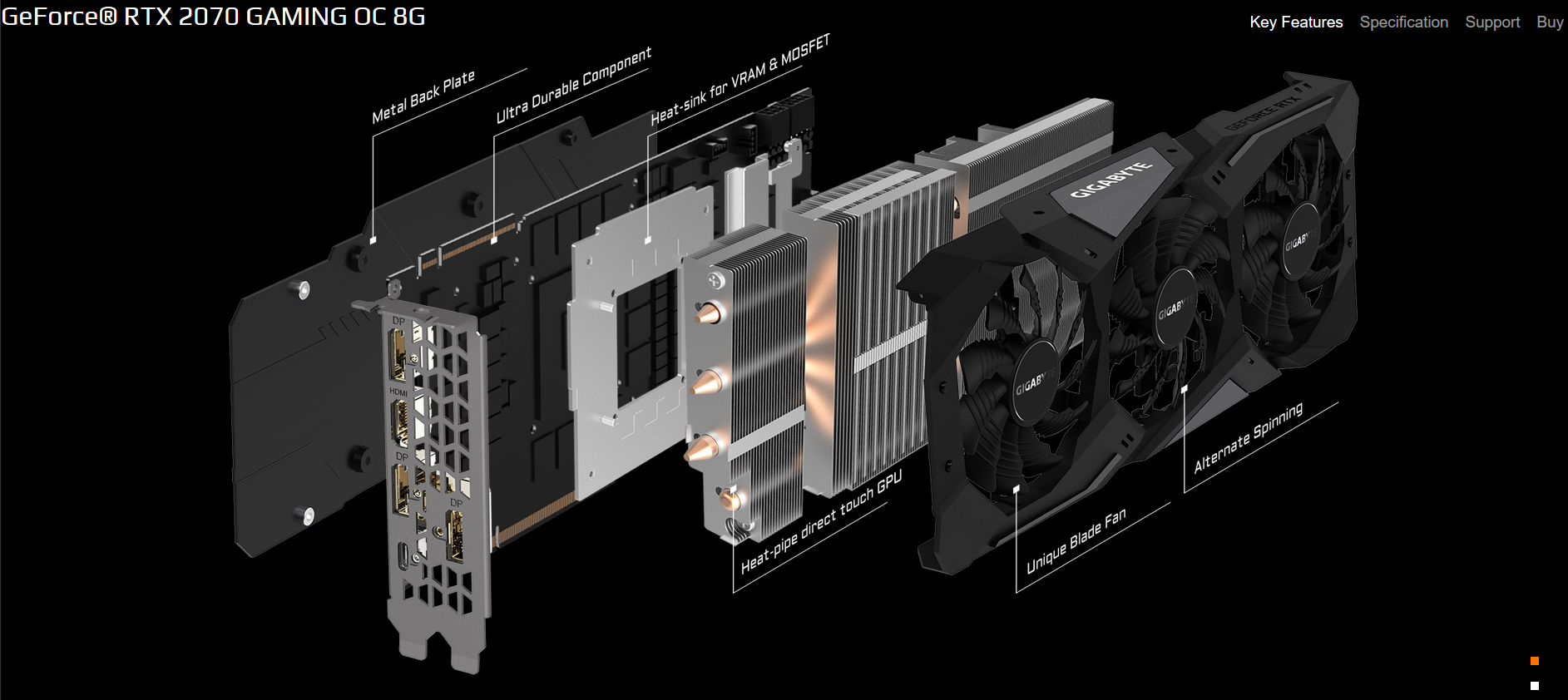Geforce Rtx 2070 Sli
All images and descriptions are for illustrative purposes only. Visual representation of the products may not be perfectly accurate. Product specification, functions and appearance may vary by models and differ from country to country. All specifications are subject to change without notice.
Please consult the product specifications page for full details.Although we endeavor to present the most precise and comprehensive information at the time of publication, a small number of items may contain typography or photography errors. Products may not be available in all markets. We recommend you to check with your local supplier for exact offers.

Geforce Rtx 2070 Software
GeForce RTX 2070 is light years ahead of other cards, delivering truly unique real-time ray-tracing technologies for cutting-edge, hyper-realistic graphics. Reinventing Design The factory overclocked GeForce RTX 2070 Founders Edition graphics card features a next-gen 6-phase power supply for maximum overclocking and dual-axial 13-blade fans coupled with a new vapor chamber for ultra-cool and quiet performance. NVIDIA's new GeForce RTX 2070 is here from $499, offers GTX 1080 Ti level performance with RTX abilities thrown into the mix.

IntroductionWe reviewed a bunch of GeForce RTX 20-series graphics cards last week, which left us with plenty of cards to test SLI performance. Since its introduction some 14 years ago, NVIDIA SLI (Scalable Link Interface) has become arguably the most popular multi-GPU technology for the sheer popularity of the GeForce brand. Multi-GPU lets you team up multiple graphics processors to increase performance, letting you either build a bleeding-edge gaming rig with the fastest graphics cards or incrementally upgrade your graphics performance over time.Until a few generations ago, SLI was supported across NVIDIA's product stacks, running from high-end through the mainstream, with only the cheapest sub-$100 graphics cards lacking it. NVIDIA has since narrowed its availability down to only the most expensive graphics cards in its lineup. With the RTX 20-series, SLI support starts at $800, with the RTX 2080.
Not even the $500 RTX 2070 gets it. This is probably because the TU106 silicon it's based on physically lacks the NVLink interface.Speaking of which, NVLink is a high-bandwidth, point-to-point interconnect originally designed by NVIDIA for the enterprise market, to build meshes of several AI compute GPUs, so an application can span across an abstract network of multiple GPUs, accessing all of their memory across a flat address-space at very high bandwidths and very low latencies. NVIDIA decided to bring NVLink to the consumer space with its 'Turing' silicon, so up to two GPUs could talk to each other at 100 GB/s and extremely low latencies without burdening the PCI-Express bus.NVIDIA has always refrained from taking the cable-free route for multi-GPU, unlike rival AMD. The NVIDIA philosophy for multi-GPU prioritizes low latency direct communication between the GPUs, so problems inherent to multi-GPU setups, such as lack of smoothness in display output or micro-stutter, could be alleviated. If you've read our recent GeForce RTX 2080 Ti, you'll know that the RTX 2080 Ti is able to saturate PCI-Express gen 3.0 x8, and had NVIDIA taken AMD's approach of doing multi-GPU over PCIe, it could have ended badly.Whatever happened to SLI-HB, you ask? Good question.
Introduced with 'Pascal,' SLI-HB doubled the interface bandwidth between GPUs, so it wouldn't bottleneck the setup at higher resolutions, such as 4K. NVLink provides sufficient bandwidth for an SLI setup to cope with even higher display formats than SLI-HB can handle, such as 4K-120 Hz, 5K-60 Hz, or even 8K for the craziest enthusiasts out there. More importantly, 3DVision Surround setups with higher resolution monitors is possible, at least according to NVIDIA.
The NVLink bridge is more complex in design than SLI-HB and can only be obtained separately, priced at $79 a piece.In this review, we are testing a 2-way SLI of the GeForce RTX 2080 Ti, GeForce RTX 2080, and freshly re-benched GeForce GTX 1080 Ti SLI. Unlike 'Pascal' cards, 3-way or 4-way SLI setups aren't even unofficially possible. The RTX 2080 Ti SLI setup is put through our entire set of graphics card benchmarks, to shape your expectations as an early adopter with very deep-pockets. We are very curious to see just how many of the AAA titles we added to our VGA bench in these past 20 months play with SLI.
Blog
- The Meters Look Ka Py Py Blogspot Rar
- Industrial Internet Of Thuings
- Download Manhaj Salaf Yazid Jawas
- Skyrim Immersion Mods 2019
- Mass Effect 2 With Controller
- Acronis True Image 2017 Keygen
- Frigo Whirlpool Arc 7190/al
- Dj Sound System Price
- Download Film The Divergent Series Ascendant Sub Indo
- Back Number Old Fashion
- Ncert Computer Book For Class 3 Pdf
- Age Of Empires 3 Key
- Anonymox Tidak Bisa Aktif
- Die Ruhe On The Beat (ray Kajioka Rmx Zippyshare
- Fallout New Vegas Gog
- Starting Tomcat V7.0 Server At Localhost (2 Has Encountered A Probl
- Pure Farming 17 Download
- Windows 7 64 Bit Android Edition Torrent
- Civ Vi Ai Battle Royale
- Electrical Equipment Distributor Directory